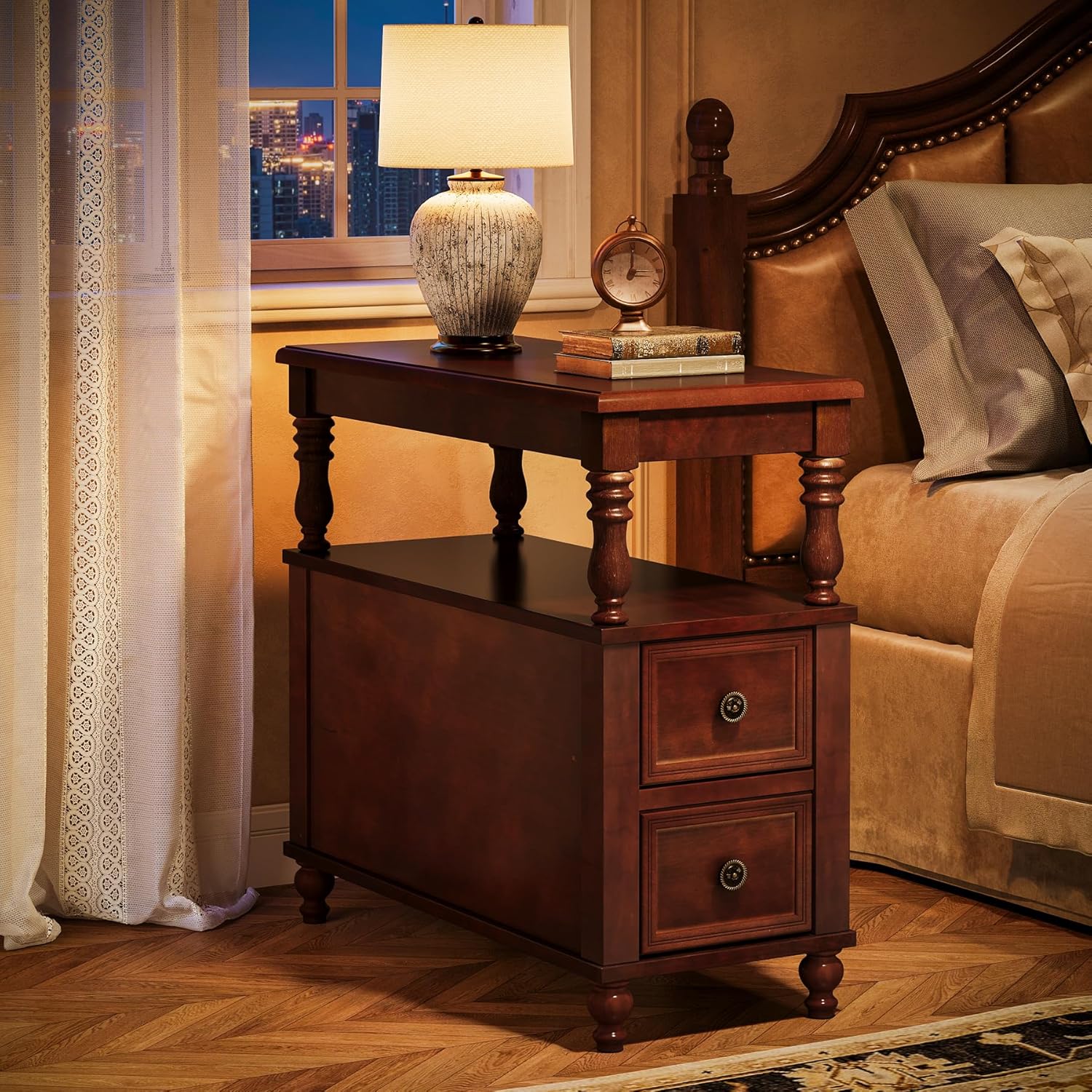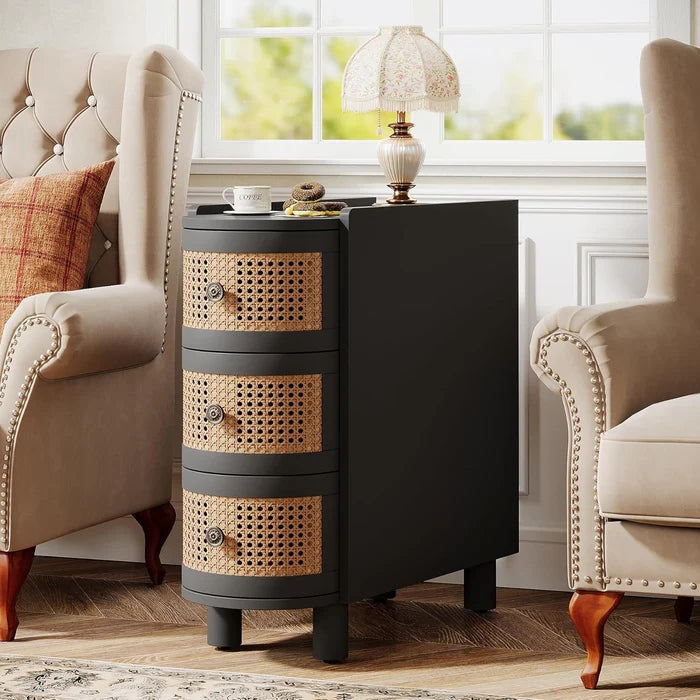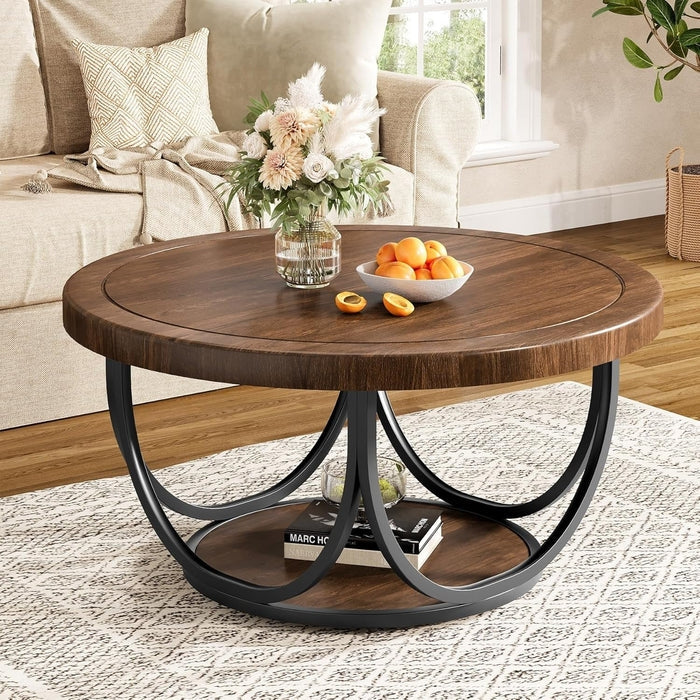Discover what end tables are and how to choose the right one for your UK home. Learn about styles, materials, sizing and placement to enhance your living space.
An Introduction to End Tables
When furnishing our homes here in the UK, we often concentrate on the larger pieces - the sofa, the bed, the dining table. But there's one compact yet incredibly useful item that truly completes a room: the end table. You might know it as a side table or occasional table, but whatever you call it, this versatile piece is essential for both practicality and style. In this guide, I'll walk you through everything you need to know about end tables, from their purpose to choosing the perfect one for your British home.

Understanding End Tables
An end table is a small table designed to sit beside sofas, armchairs or beds. It serves multiple practical purposes - holding lamps, drinks, remote controls, books and other essentials you want close to hand. Think of it as your personal landing spot that keeps your space tidy and everything within easy reach.
I used to view end tables as purely decorative, but after living with one for several months, I've come to appreciate how they make daily life more convenient. Whether I'm relaxing on the sofa with a cuppa, reading a book, or entertaining guests, having that extra surface nearby has become indispensable.

Popular Styles of End Tables
There are various end table designs to suit different tastes and requirements:
- Traditional: Typically crafted from wood with classic designs, these often complement traditional furniture suites. I'm particularly fond of solid oak end tables for their timeless appeal and durability.
- Modern: If you prefer clean, contemporary lines, modern tables using materials like glass and metal might be ideal. I recently added a sleek metal and glass table to my living room, and it's created a much brighter, more open feel.
- Nesting: These sets of matching tables can be stacked together or separated to create flexible arrangements. I find them incredibly useful when we have visitors - they provide extra surface space without permanently cluttering the room.
- Storage: Featuring drawers or shelves, these practical tables are perfect for concealing clutter. I use one in my bedroom to keep my reading glasses, books and other bedtime essentials neatly organised.
Common Materials for End Tables
The material you choose significantly influences the table's appearance and how it fits with your decor:
- Wood: A classic choice that brings warmth and character. Options like oak, walnut and maple are both durable and attractive. My walnut end table has become the perfect anchor for our sitting room.
- Metal: Ideal for industrial or contemporary settings, metal tables offer clean lines and modern appeal. I've admired several powder-coated steel tables that make a real style statement.
- Glass: Glass tables create a light, airy feel, perfect for smaller rooms where you want to maintain a sense of space. The glass and metal table in our living room doesn't visually overwhelm the area.
- Mixed Materials: Combining wood and metal has become increasingly popular for achieving a balanced, contemporary look. Our current metal-and-wood table bridges the gap between our traditional and modern pieces beautifully.
Choosing the Right End Table
Selecting the perfect end table involves both practical considerations and personal taste:
- Size: Ensure your table's height aligns with your sofa or chair arms for comfortable use. When we had a larger sofa, I learned that a tiny table looked disproportionate - now I always consider scale carefully.
- Design: Choose a design that complements your room's aesthetic. For modern interiors, clean lines work well, while traditional settings might suit detailed woodwork. Switching to a contemporary table recently gave our space a welcome update.
- Form and Function: Consider whether you need storage or prefer a simple decorative piece. As someone who likes to keep remotes and magazines handy, I've found tables with drawers incredibly useful.

Practical Placement Advice
Positioning your end table correctly maximises both its usefulness and visual impact:
- Beside Seating: The most common placement is next to sofas or armchairs. Keep it close enough for easy access but not so near that it obstructs movement. Ours sits perfectly within arm's reach from the couch.
- Consider Room Flow: Ensure the table doesn't block pathways or make the room feel cramped. In compact spaces, a slimmer design often works better.
- Creative Solutions: For larger areas, consider grouping tables or using them in unexpected spots. We've placed nesting tables in our hallway that are perfect for keys and post.
Current End Table Trends
End tables offer an excellent opportunity to express your personal style:
- Mid-Century Modern: Vintage-inspired designs with tapered legs and clean lines are enjoying renewed popularity. I've seen some beautiful retro-style tables that add real character to contemporary rooms.
- Industrial Style: Metal frames combined with reclaimed wood create an urban, contemporary feel. The metal-framed table in our study is both stylish and remarkably sturdy.
- Sustainable Designs: With growing environmental awareness, many brands now offer eco-friendly options using recycled materials - perfect for the conscious consumer.
Using End Tables Throughout Your Home
While most common in living rooms and bedrooms, end tables can enhance various spaces:
- Living Room: Placed beside seating, they make your arrangement more functional and welcoming. Ours regularly holds drinks, books and the occasional decorative item.
- Bedroom: Serving as nightstands, they're ideal for lamps, alarms and bedtime essentials.
- Hallways: A small table in an entryway provides a perfect spot for keys, mail or a decorative accent.

Final Thoughts
End tables might be small, but they make a significant impact on your home's functionality and style. Whether you need storage, a place for your cuppa, or simply a decorative accent, the right end table can transform how you use and enjoy your space.
Take time to consider size, material and style that suit your home. Once you find the perfect match, you'll wonder how you managed without it.



